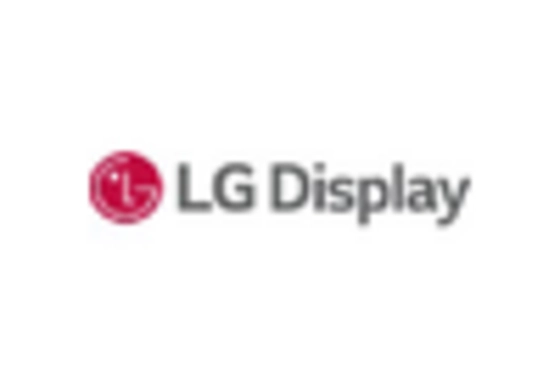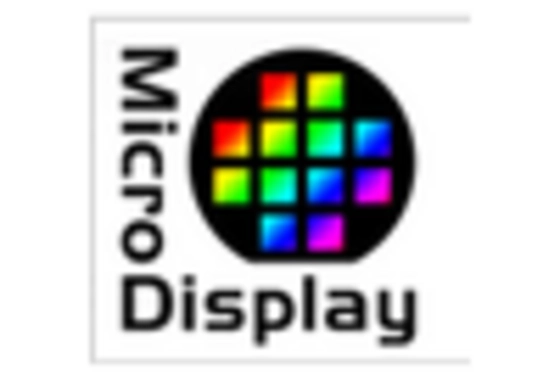Rising Demand in Consumer Electronics
The Liquid Crystal On Silicon Display Market is witnessing a notable increase in demand from the consumer electronics sector. With the proliferation of smart devices, including smartphones, tablets, and smart TVs, the need for high-quality displays has escalated. According to recent data, the consumer electronics segment accounts for nearly 40% of the total market share, reflecting a robust appetite for advanced display technologies. This trend is further fueled by consumer preferences for larger screens and higher resolutions, which are becoming standard in new devices. As manufacturers strive to meet these demands, the Liquid Crystal On Silicon Display Market technology is positioned to play a pivotal role in shaping the future of consumer electronics.
Growing Applications in Automotive Displays
The Liquid Crystal On Silicon Display Market is increasingly being integrated into automotive applications, driven by the demand for advanced driver-assistance systems (ADAS) and infotainment solutions. As vehicles become more technologically sophisticated, the need for high-resolution displays that provide critical information to drivers is paramount. Recent estimates suggest that the automotive sector could contribute up to 25% of the overall market by 2026. This shift is indicative of a broader trend towards digitization in vehicles, where displays serve not only functional purposes but also enhance the overall driving experience. The adoption of Liquid Crystal On Silicon Displays in dashboards and head-up displays is likely to accelerate as manufacturers prioritize safety and user engagement.
Miniaturization and Lightweight Design Trends
The Liquid Crystal On Silicon Display Market is benefiting from the ongoing trends of miniaturization and lightweight design in various applications. As industries strive for more compact and efficient solutions, the demand for smaller, lighter displays is on the rise. This trend is particularly evident in portable devices, where space and weight constraints are critical. The ability of Liquid Crystal On Silicon Displays to deliver high performance in a compact form factor makes them an attractive choice for manufacturers. Furthermore, the market is expected to see a shift towards flexible and bendable displays, which could open new avenues for applications in wearables and other innovative products. This evolution aligns with the broader industry movement towards more versatile and adaptable technologies.
Increased Investment in Research and Development
The Liquid Crystal On Silicon Display Market is witnessing a surge in investment directed towards research and development initiatives. Companies are increasingly allocating resources to innovate and enhance display technologies, aiming to improve efficiency, reduce costs, and expand application areas. This focus on R&D is crucial as it fosters the development of next-generation displays that can meet the evolving needs of various sectors. Recent reports indicate that R&D spending in the display technology sector has increased by approximately 20% over the past year, reflecting a commitment to advancing Liquid Crystal On Silicon Displays. This investment is likely to yield breakthroughs that could redefine market dynamics and drive future growth.
Technological Advancements in Display Technology
The Liquid Crystal On Silicon Display Market is experiencing a surge in technological advancements that enhance display quality and performance. Innovations such as improved pixel density, faster refresh rates, and enhanced color accuracy are driving the adoption of these displays across various sectors. For instance, the integration of advanced backlighting techniques and quantum dot technology is expected to elevate the visual experience significantly. As a result, the market is projected to witness a compound annual growth rate (CAGR) of approximately 15% over the next five years. This growth is indicative of the increasing reliance on high-performance displays in consumer electronics, professional applications, and entertainment sectors.














Leave a Comment